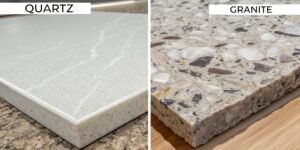Choosing the wrong quartz slab size can be a costly mistake. You worry about ugly seams, wasted material, and difficult installation. I will guide you with a simple, clear process.
To choose the right quartz slab size, you must first measure your space accurately. Next, match your project's needs with standard and jumbo slab dimensions. Finally, always consider transportation and installation limits before you buy. This method ensures a perfect fit and avoids expensive problems.
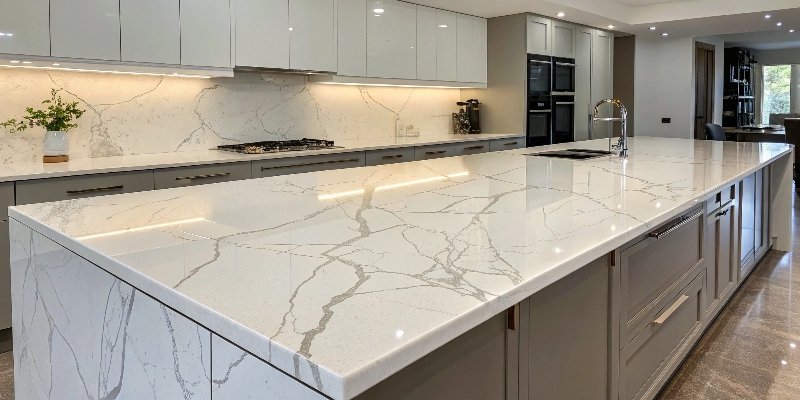
I've been in the quartz export business since 2012. Over the years, I have helped many clients, like Rajiv, a procurement manager from Mexico, navigate these choices. He needs to be efficient and precise for his firm's construction projects. The process I am about to share is the same one I use to help professionals like him succeed. It removes the guesswork and gives you confidence in your decision. Let’s walk through it step-by-step so you can get the perfect result for your project.
What size quartz slab do I need?
You have a project in mind but feel stuck. You are not sure about the exact slab dimensions you need. This uncertainty can stop a project before it starts. Let's fix that.
First, measure your countertop's length and width with precision. Remember to add extra for any overhangs. A jumbo slab is often best for large kitchen islands to avoid seams. Standard slabs work perfectly for smaller jobs and help manage costs.
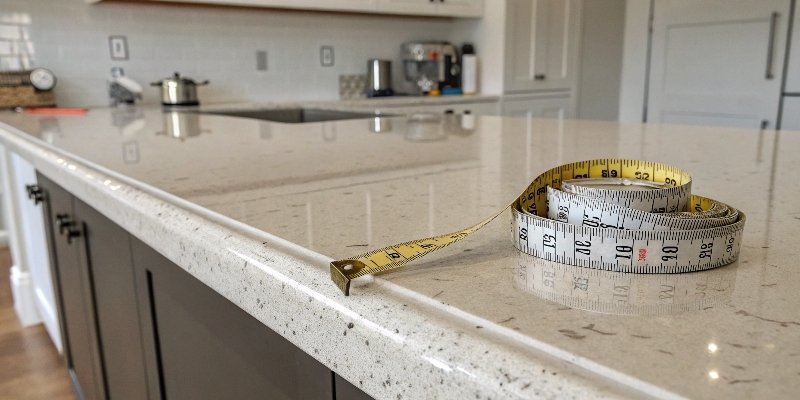
The first step is always to measure your space. When I renovated my own kitchen, I faced a common problem with an L-shaped corner. I realized a single standard slab might not cover the whole area without a seam. This meant I had to choose between a larger slab or planning a very careful cut. I also learned a valuable lesson from experts: always add an extra 1-2 centimeters to your measurements. This small buffer saved me from rework when the installation happened. I suggest you take out a measuring tape and record every dimension. Think about cutouts for your sink and cooktop, as these details directly impact the size you'll need. For my B2B clients, getting these initial numbers right is the most critical part of the procurement process.
Key Measurement Areas
To get it right, you need to be systematic. I tell my clients to create a simple chart to track their measurements. It helps avoid confusion and ensures every detail is captured before placing an order.
| Area to Measure | Details to Note |
|---|---|
| Main Countertop | Length, Width, L-shaped corners |
| Kitchen Island | Total Length, Total Width |
| Backsplash | Height, Length, Outlet cutouts |
| Sink & Cooktop | Exact cutout dimensions |
| Edge Overhang | Desired overhang (e.g., 1.5 inches) |
Is 2 cm thick enough for quartz countertops?
You see different thickness options, like 2 cm and 3 cm. You wonder if the thinner 2 cm slab is strong enough for daily use in a busy kitchen. Let's look at the facts.
Yes, a 2 cm thick quartz countertop is strong enough for most kitchens and bathrooms. It gives a sleek, modern look and has great durability. However, 3 cm slabs offer a more solid feel and slightly better impact resistance for very high-use areas.
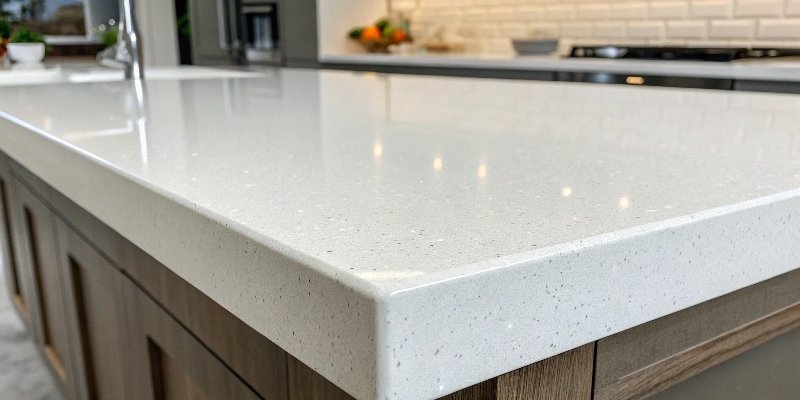
The choice between 2 cm and 3 cm thickness often comes down to three things: aesthetics, application, and budget. From my experience, 2 cm slabs are very popular in modern designs for their clean lines. They are also lighter, which can make transportation and installation a bit easier and more cost-effective. For a procurement manager like Rajiv, this cost difference can be significant across a large project. However, 3 cm slabs have a commanding presence. They look and feel more substantial. If you have a large island or wide countertop spans without full support underneath, a 3 cm slab provides extra rigidity and strength. I always advise clients to consider how they use their space. For most residential kitchens, 2 cm is perfectly fine. For a commercial bar top, 3 cm is a better choice.
Comparing 2 cm vs. 3 cm Thickness
The right choice depends on your specific project needs. Here is a simple comparison to help you decide.
| Feature | 2 cm (¾ inch) Quartz | 3 cm (1 ¼ inch) Quartz |
|---|---|---|
| Durability | Excellent for daily use | Superior impact resistance |
| Aesthetics | Sleek, modern, minimalist | Substantial, classic, bold |
| Cost | More budget-friendly | Higher material cost |
| Installation | Lighter, easier to handle | Heavier, may require more support |
| Best For | Standard kitchens, vanities, backsplashes | Large islands, commercial spaces |
What is the standard size of a stone slab?
You hear terms like "standard" and "jumbo" all the time. But what do they really mean for your project? This confusion can make your planning and budgeting much harder.
A standard quartz slab is usually about 56 x 120 inches (1.4 x 3.05 meters). To cover larger areas seamlessly, many brands now offer jumbo slabs, which can be up to 63 x 126 inches (1.6 x 3.2 meters).
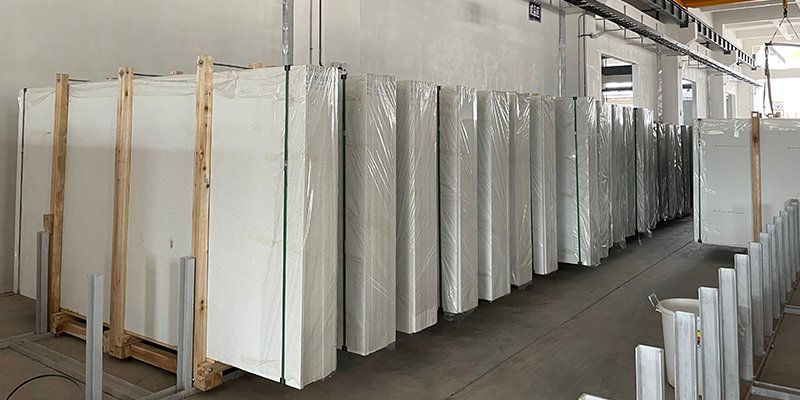
Understanding these dimensions is key to smart project planning. When I work with partners on large-scale projects, knowing the difference between standard and jumbo is crucial for optimizing material use and cost. For example, a standard slab is often perfect for a galley kitchen or bathroom vanities. You can cut it efficiently with minimal waste. But for the large, open-concept kitchens that are popular today, a jumbo slab is a game-changer. I had a client who insisted on a jumbo slab for their huge island. The seamless, continuous surface became the stunning centerpiece of their home. While the material and transport cost more, the final look was worth it to them. For other projects with tighter budgets, we have used standard slabs with expertly matched seams to achieve a beautiful and cost-effective result.
Common Quartz Slab Dimensions
The size you choose directly affects the look and cost of your project. Here are the typical sizes you will find.
| Slab Size | Typical Dimensions (Imperial) | Typical Dimensions (Metric) | Best Use Case |
|---|---|---|---|
| Standard | 56" x 120" | 1.4m x 3.05m | Standard countertops, vanities |
| Jumbo | 63" x 126" | 1.6m x 3.2m | Large islands, seamless designs |
How to choose the right quartz?
Choosing the right quartz goes beyond just size. With so many colors and patterns, you might worry about making a design choice you will regret later. I am here to help.
To choose the right quartz, first match it to your overall design and color scheme. Then, always look at the full slab, not just a small sample. Finally, confirm the supplier is trustworthy and that you get a quality product.

Making the final choice combines practical needs with your personal style. But one crucial factor that is often forgotten is logistics. I almost made this mistake myself. I chose a beautiful jumbo slab for a project without thinking about how to get it into the building. The slab was too big for the elevator and the stairs. Luckily, I talked to my supplier beforehand. They recommended a different size that could be transported in sections. This experience taught me a vital lesson: always confirm your delivery path. Can the slab fit through doorways, hallways, and elevators? Discuss this with your supplier. Many, like myself, offer expert advice and even site measurement services to prevent such problems. This communication is key for a smooth installation.
Key Selection Criteria Checklist
Follow this simple checklist to ensure you cover all your bases before you make a final purchase.
| Criteria | Action Item |
|---|---|
| Visual Match | Bring cabinet, flooring, and paint samples to match with the slab. |
| Physical Inspection | View the full slab in person. Check for any defects. |
| Size & Logistics | Confirm slab dimensions will fit through your home's access points. |
| Supplier Trust | Ask about the warranty, after-sales service, and installation process. |
Conclusion
Choosing the right quartz slab is simple. Measure your space, understand the common sizes, and plan for delivery. Get these three steps right, and your project will be a huge success.





